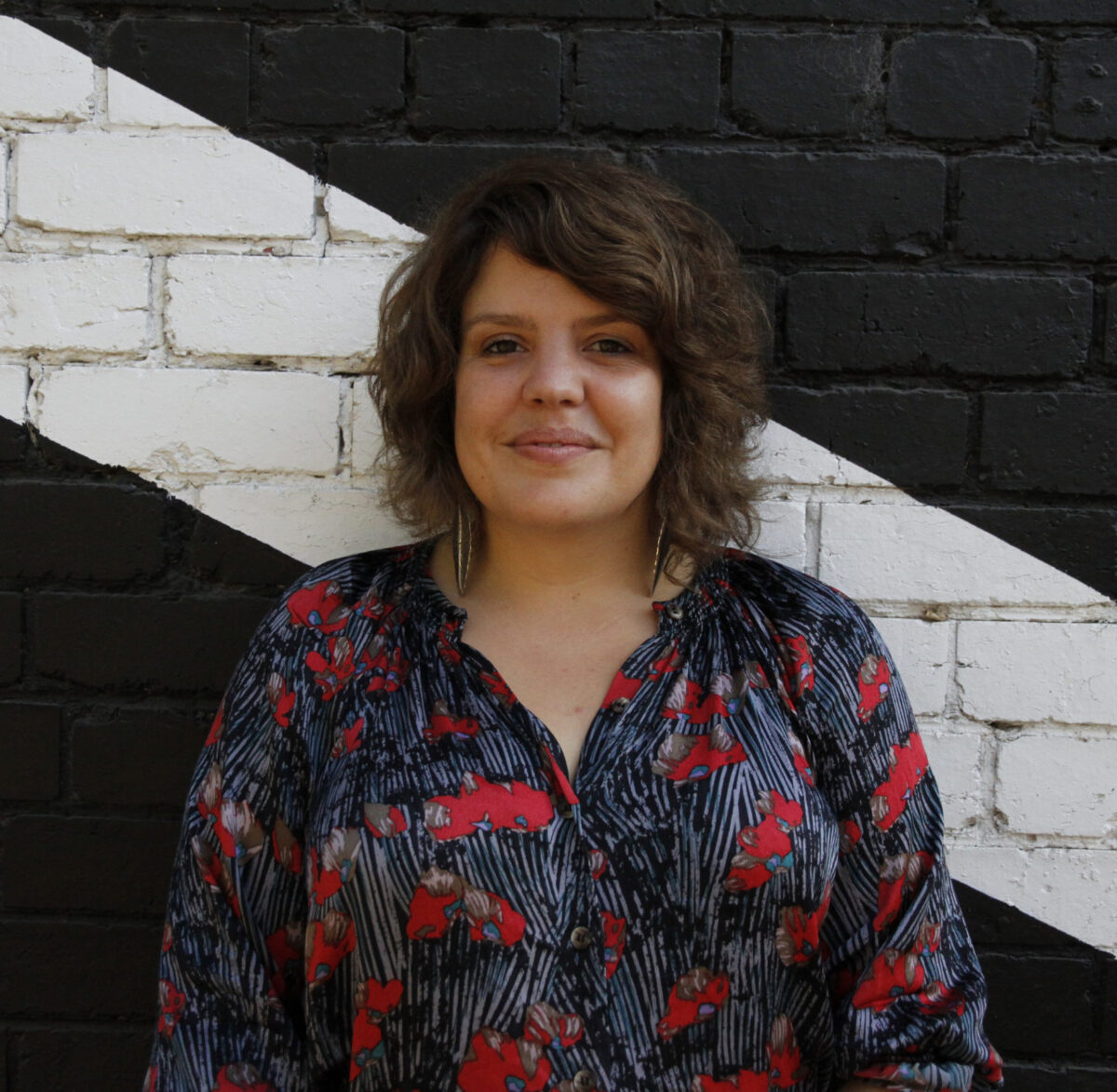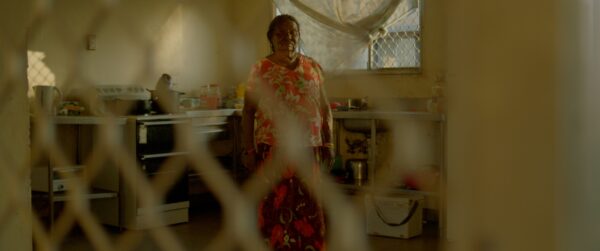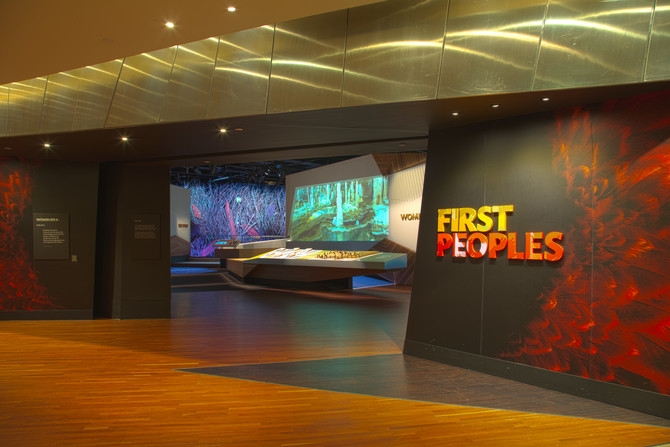
A proud Worimi woman from south-east Australia, Genevieve Grieves has over 20 years of experience in the arts and cultural industries as a highly respected First Nations educator and storyteller. Genevieve leads decolonisation training through Shifting Ground and develops impactful films and storytelling projects that are deeply grounded in collaborative and holistic approaches through GARUWA, a family business co-created with her brother Kieran Satour. Genevieve’s research interrogates violence in settler-colonial Australia to amplify First Peoples’ voices and narratives through decolonising practice and community empowerment, a sought-after approach across Australian university, institutional and community spaces.
As the arts and cultural sector celebrate Creative Australia’s shift to placing First Nations First at the heart of our cultural policy, Genevieve Grieves reflects on the nation’s growing appetite for content created by First Peoples, detailing how increased investment in First Nations-led approaches is needed to enable successful models of co-creation, collaboration and power-sharing.
How are creatives demonstrating best practices in approaching and engaging and First Nations in creating content?
There are so many First Nations creatives across the country who are demonstrating and exhibiting best practices. People are building spaces that are completely First Nations-led, that align with our cultural protocols, our ways of doing, being, and knowing. They have created these unparalleled spaces that are shifting Australian society and strengthening us culturally in ways that make a big impact, like BlakDance, Moogahlin Performing Arts, Yirramboi Festival, and the work that Ben Graetz did for World Pride in Sydney. There are too many to list because so many people are operating outside colonial and Western frameworks in such incredible ways.
Then there are mob who are working on the inside, within institutions or organisations, they’re doing the incredibly hard, laborious work of trying to shift those spaces, to decolonise them, to make them safe and effective for us. It’s difficult, thankless work that requires so much energy, but it’s so important that we have First Nations people on the inside, decolonising the spaces, reframing them, and making them useful because these organisations have money, they have our cultural objects, and they have great potential if they can be shifted to work with us, not work against us.
For me, best practice is when an idea or project is generated with First Nations community or creatives from the beginning. Many projects, past and present, have been deeply extractive of Indigenous knowledges and people — it’s not about creating a project that a person or an institution feels would be useful, wants to do, or wants to appear to be doing. It’s about a process of co-creating together with First Nations people to develop projects and content that truly align with the needs and values of communities.
Doing this requires a realignment of the external party’s values and reframing of methodologies — their ways of doing, being and knowing — to be open to shifting their practice and to power-sharing. The relationship must evolve from shared power and shared resources. When those things are aligned, when the external party is willing to give up their power and resources and their ways of doing things, you see really amazing things happen. And from that place, strong relationships of trust are built over time. It is really heartening to see this shift happening more and more, towards more ethical and reciprocal ways of working together across cultures.
This model of co-creation and collaboration is an inspiring, generative process that can be utilised to develop projects operating from a space of best practice. In the screen industry, there is some really great work happening not just here but globally too. I’ve been reading Collective Wisdom (published by MIT), which outlines what the word co-creation can mean when it’s done well and the dangers of using this word — like any word, whether it’s decolonisation or cultural safety — without really exploring what that means and how it works on the ground. What we continuously come back to is the need for real resource and power-sharing.
If you’re a non-Indigenous person working with First Nations, CALD or communities of different abilities, and you’re not giving up some sort of power, resources, or wealth, then what are you actually doing? We see a lot of work out there which is optical allyship at best, and even though it may seem benign, it can still be exploitative.

Shirley Simon in GARUWA short, Power to Country – image credit to Ryan Andrew Lee
How do you exhibit best practice in your work?
I’ve worked in the arts and cultural sector for about 20 years and over that time my practice has shifted greatly, every project I’ve worked on, every relationship that I’ve entered into, I’ve been transformed or shifted in some way. That’s how your understanding and wisdom develop, which never ends. I’m always learning, and still have many things to learn.
My work at the moment is through my storytelling and production company, GARUWA where we’re led by our values as First Nations people and how we share stories and work with communities. We’re careful about who we partner with or who we support and will only align with external entities who have the same values as us. We won’t enter into any projects that we feel harm people or culture or Country. It’s really important to us that the work we’re doing is adding value, strength and opportunities for societal shifts. That’s what drives us.
In the screen space that we are working in now, there are lots of outstanding blak filmmakers doing pivotal work, who have been shifting Australia’s society and telling our stories for so long. There’s extraordinary work that’s already been done there by people like Rachel Perkins, Warwick Thornton, Ivan Sen, just to name a few. They — like many, many others — have shifted Australia’s consciousness with their storytelling and have made so much social change.
To add to this growing body of transformational storytelling, we are rethinking the hierarchies of film and how production is structured. Often it is developed from a very Western, hierarchical system, where the director sits at the top and everyone else is below the person who makes all the decisions. While film is a very collaborative medium — part of the beauty of it is how collaborative it is — the hierarchies are still very strong and often there is a separation between the storyteller and the director. The “subject”, whose story is being told typically doesn’t have much control over how they are represented on screen.
We’re really interested in shifting that dynamic by exploring new models of co-creating that bring the storyteller — the person whose story we are sharing — to the fore, giving them complete control over how their story’s represented, which is such an important thing. A lot of exciting work is happening in that space, particularly internationally, where the person who would normally be the director actually takes the role of producer and the person whose story is being told is the director.
In terms of my other creative work, I think what’s exciting about the work that First Nations creatives are doing is the way we’re amplifying voices that aren’t heard enough in our society and we’re actually supporting the aspirations of community in the work that we do. Whether that’s bringing an issue to the forefront, building someone’s skill set, or providing new opportunities, there are so many exciting things happening at the moment.

Djirri Djirri women from baban darrang (mother tree) for University of Melbourne – image credit to Sky Davies
Have you seen a change in the industry over the years?
There’s definitely been a massive shift in the arts and cultural sector in the last five years with a focus on First Peoples first, the industry is really leading the way in terms of these shifts in our society. Even though we’re undervalued as a part of Australia’s society, we — as a sector with all the remarkable people that make it up — do a lot of innovation towards cultural and social change. First Peoples first is one of these significant changes.
Organisations are shifting the rhetoric around how they work and that’s a really welcome development. It doesn’t mean it’s not complex in terms of how that is enacted in the form of social change, we see a lot of discourse, but we don’t always see the resources or financial commitment to back it up.
One example of this is the museum sector. There is a horrendous and violent history of damaging practices in the museum sector that continues into the present, from the taking of ancestral remains to gatekeeping of cultural collections. First Nations led museum departments are now undertaking an enormous amount of work in trying to undoing that damage. I don’t think the leadership of these institutions have a true understanding of how many staff are needed or what it costs to actually repair all that damage while decolonising and indigenising these spaces to meet the needs of community and operate ethically. That will require a huge investment and it’s just one example of what is needed across our sector.
So what does this look like five years from now?
There is crucial work to do in repatriating cultural material and I hope to see institutions making significant investments in resourcing this work as the people engaging in these processes carry a huge burden of making change. We need real action to shift these institutions.
There is also much to be done in amplifying Indigenous voices and meeting a greater appetite for First Nations content. We have to ensure that those projects continue to be First Nations led and that the people involved are supporting the aims and aspirations of community. It’s crucial that we’re co-creating through models of shared power and resources five years from now, if not sooner. We need to see organisations be really open to projects led by First Peoples and be willing to shift their ways of working, otherwise, there are unequal, extractive power relationships at play.
How does self-determination fit into this industry?
Self-determination has to be at the centre of everything.
Working at the Melbourne Museum on the First People’s exhibition with the Yulendj group, I was part of a team that included Caroline Martin (Boonwurrung, Wemba Wemba, Barapa Barapa and Trawlwoolway) and Vicki Couzens (Gunditjmara and Keerray Woorroong) alongside key members of the Victorian Aboriginal community. Working with Yulendj to develop that exhibition was the greatest gift, because they had full control of the content. What was shared was drawn from their voices.

Of course, we started with parameters. There were certain things that we needed to adhere to, like the budget, floorspace available or the kind of content we could create, but essentially the museum gave over control to the Elders. That was such a valuable cultural shift for the organisation and a fundamental process of relationship-building with a museum and a community that had been at loggerheads for many years.
Lots of people are doing good work in this way now, which is really heartening to see. They’re ensuring that the project has integrity, that it’s authentic, that it’s capacity building, and that it’s actually meeting the needs of community.
What do you hope to see in the future?
I hope that non-Indigenous people in the sector are working to better understand their own position, where they’ve come from, who they are, what they’re bringing to this work, and why they want to do it. I also hope that they are really conscious of capacity building, there is a tendency for a lot of these spaces to still be really white and they’re not very diverse, we need a real shift in that power-sharing.
It would be great to see more diverse people in positions of power in the arts and cultural sector, and it’s not just First Nations people at the table; we need people with different abilities or more cultural diversity that actually represent who we are as a nation. That’s a really important cultural shift. There are so many talented emerging First Nations creatives who deserve opportunities to be leading projects or organisations in their communities. If people are working to support First Peoples’ initiatives, they’re creating opportunities for someone else to take over and do that work, which may be working themselves out of a job. Sometimes people can feel threatened by that because they think, “Well, what’s my place? What is my role?”, but there is so much to do in sharing knowledge and sharing skills. There are so many ways to be of use and to be of service.
In identifying your own privilege and understanding your own skills, you have the potential to do something extraordinary. It’s not something to be ashamed of or to struggle with. If you’ve got power and you’ve got privilege, then you’ve got an opportunity to actually make yourself really, really useful and to support these changes that our sector really needs.
Project led by:

Supported by:

In partnership with:
![]()
